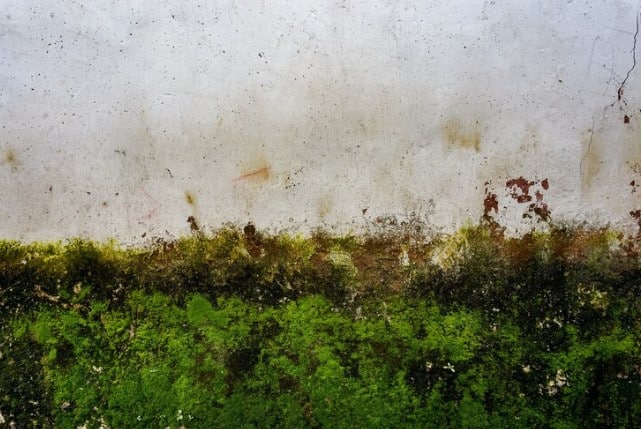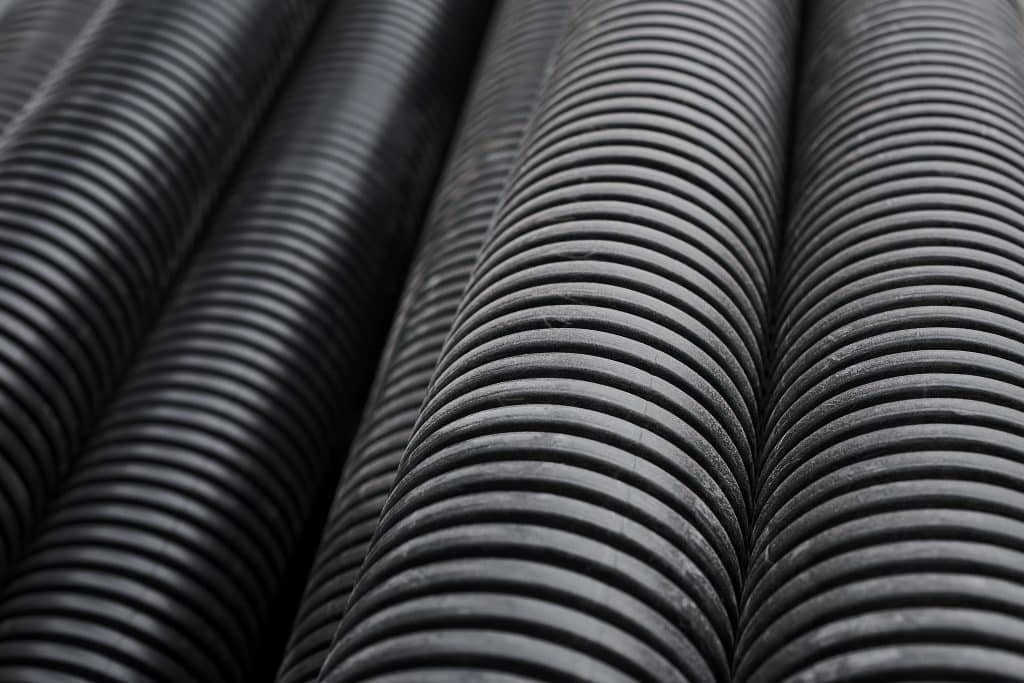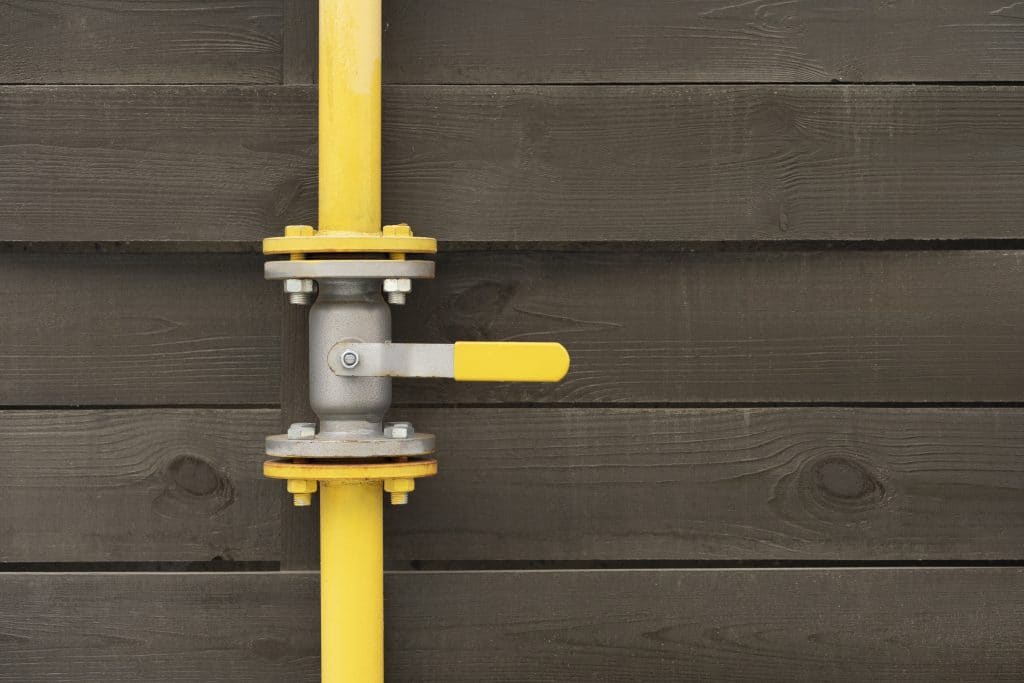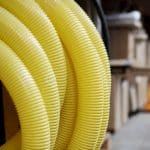Contents
- 1 Weeping Tile Importance
- 2 Exploring the Purpose and Function of Weeping Tiles
- 3 How Do Weeping Tiles Work?
- 4 Different Types of Pipes Used in Weeping Tile Systems
- 5 Step-by-Step Guide to Installing Weeping Tiles
- 6 How Does Waterproofing with Weeping Tiles Work?
- 7 Maintenance of Weeping Tile Systems
- 8 Challenges in Managing Weeping Tiles
- 9 Interior vs Exterior Drains
- 10 Prospects of Your Home’s Energy Efficiency
- 11 Conclusion
- 12 Weeping Tile Installation FAQ
Have you ever wondered how your home stays safe from water damage during heavy rains? This question leads to another consequent question — what is a weeping tile? Realizing how do weeping tiles work is the answer.
Weeping tile installation, one of the main components in home waterproofing, involves placing porous pipes around your foundation to divert water away from the structure. This simple yet effective system prevents water accumulation that can lead to costly damage and mould growth.
Weeping Tile Importance
Weeping tiles are a component of home drainage systems. They consist of porous pipes that allow water to enter and be redirected away from the house. Initially, these were clay pipes with gaps between them, but modern weeping tiles are plastic with small slits or holes.

The primary purpose of weeping tiles is to prevent water accumulation around foundations. The prevention is crucial because excess moisture can lead to structural damage, mould growth, and basement flooding. By collecting and redirecting water, weeping tiles help maintain the integrity of a building’s foundation.
Evolution over time
Historically, weeping tile systems have evolved significantly. The term tile refers to the original terracotta pipes used in older systems. These clay pipes were effective for their time but had limitations in durability and efficiency.
Modern advancements have replaced clay with more durable materials like plastic. Such upgrades improve longevity and performance while simplifying installation processes. These changes reflect an ongoing commitment to protecting homes from water damage effectively.
Installation сonsiderations
Installing weeping tiles involves digging a trench around the home’s foundation. Careful planning ensures a proper slope for optimal drainage. Factors such as soil type and landscape are essential during installation.
Many people opt for professional installation due to its complexity. Professionals can assess specific needs based on local conditions and provide tailored solutions that ensure the system’s long-term effectiveness.
Exploring the Purpose and Function of Weeping Tiles
Weeping tiles serve a critical role in water diversion. They protect structures by directing underground water away, preventing moisture from compromising the integrity of foundations. A weeping tile is a porous pipe that allows water ingress through small holes or perforations.
The process starts with water entering through these perforations. It then gets channelled away from the building to a safer location, like a storm drain or sump pump. This system is crucial, especially during heavy rainfalls or snowmelt periods.
Soil stability
Another critical function of weeping tiles is enhancing soil stability around foundations. By managing the hydrostatic pressure exerted on walls, they prevent structural damage such as cracks and leaks.
When installed correctly, with a gravel layer and proper trenching, weeping tiles help maintain consistent soil moisture levels. Constant soil conditions mean less expansion and contraction that could harm your foundation.
Integrated waterproofing
Weeping tile installation forms part of an integrated approach to waterproofing and drainage solutions for buildings. It works alongside other systems like waterproof membranes and proper grading to ensure comprehensive protection against water damage.
This integration ensures that not only immediate but also future risks are mitigated. The goal is to create long-lasting solutions for keeping basements dry and foundations free from water-induced complications.
How Do Weeping Tiles Work?
Weeping tiles collect excess water from the soil. As rainwater or groundwater rises, it gets into the weeping tile system. These systems lie buried around a home’s foundation or beneath basement floors. They are pipes with small openings or perforations that allow water in but keep soil out.
The effectiveness of weeping tiles depends on proper installation and surrounding materials. Gravel has the property of permeability, which is why it is so popular. It helps filter the soil and allows only water to enter the weeping tile system.
Redirecting flow
Once collected, water needs a pathway to exit away from the structure. Weeping tiles play an essential role by redirecting this water. Depending on local regulations and building design, they may connect to either sewer lines or sump pumps.
When connected to sewer lines, these connections must comply with municipal codes to prevent overloading public sewers during heavy rainfall. In cases where they lead to sump pumps, these pumps then expel the collected water safely away from the property.
Different Types of Pipes Used in Weeping Tile Systems
Understanding pipe materials is crucial for weeping tile installation. Historically, clay pipes were a gold standard. However, they are prone to cracking and clogging. Modern systems often use plastic or PVC pipes, which offer superior durability.
Plastic pipes resist soil acidity and plant roots. They remain functional for decades with little maintenance. PVC options are lightweight and easy to work with, making them a favourite among professionals.
Perforation choices
Depending on the application, choosing between perforated and non-perforated pipes is crucial. Perforated pipes allow water ingress, which is vital for drainage solutions. Non-perforated pipes convey water away without absorption.
For effective drainage, perforations should face downwards into the gravel bed. This orientation ensures that how do weeping tiles work aligns with their purpose: preventing water buildup around foundations.
Longevity factors
The longevity of weeping tile systems hinges on pipe material choice. Plastic and PVC outlast clay due to their resilience against environmental factors like freezing temperatures or heavy traffic above ground level.
When considering soil type, it’s important to note that certain soils can affect the lifespan of these systems differently. Sandy soils impose less stress on pipes than denser clay soils do.
Step-by-Step Guide to Installing Weeping Tiles
Excavation around your home’s foundation is necessary to begin the weeping tile installation. This step requires precision and care. First, remove soil along the perimeter where the weeping tiles will be placed. The trench should be deep enough to reach the footing of the foundation.
Ensure safety during this phase. Shoring up the walls of your trench can prevent collapses. Once excavated, inspect the foundation for structural damage that needs repair before proceeding.
Pipe installation
The next step involves laying down pipes correctly with a proper gradient. Positioning is crucial for tile installation effectiveness; it ensures water flows away from your home’s foundation instead of pooling around it.
Gravel backfill
Finally, backfilling with gravel optimizes drainage. For effective drainage, drainage should flow easily into the weeping tile, and a system is usually recommended. Cover pipes with at least six inches of coarse gravel or crushed stone before replacing topsoil over them.

This layer also helps distribute weight evenly and prevents excessive pressure on pipes, which could lead to breakage or malfunction.
How Does Waterproofing with Weeping Tiles Work?
Weeping tiles work by directing water away from the foundation. They are often paired with waterproof membranes or coatings on the exterior of basement walls. This combination allows moisture to drain away quickly.
The installation process involves laying weeping tiles along the footing of a house. These tiles connect to a discharge point, which can be a storm sewer or sump pump. The correct setup prevents water from pooling against concrete blocks and other materials susceptible to moisture.
Pressure reduction
One of the benefits of weeping tiles is their role in reducing hydrostatic pressure against foundation walls. When ground-level water builds up around a home, it creates pressure that pushes against basement walls.
By providing an escape route for extra water, weeping tiles help maintain structural integrity over time. They prevent issues like cracks or bowing in basement walls by managing the weight exerted by surrounding soil and water. But if you do have to deal with damages, it’s better to trust a professional crack repair.
Maintenance of Weeping Tile Systems
Regular inspections are crucial for the longevity of weeping tile systems. Homeowners should establish a routine to check their system’s performance. Ideally, inspections should occur annually, before heavy rainfall seasons.
During these checks, look for signs of sediment or debris buildup. Removing clogs in a timely manner can prevent more severe issues. Also, inspect surrounding soil and landscaping to ensure they’re not compromising the system.
Cleaning methods
Effective cleaning maintains an unobstructed flow within weeping tiles. One common method is flushing the system with water to dislodge minor blockages. Specialized plumbing snakes can be used for tougher clogs.
Some cases require a professional waterproofing service to clean the system thoroughly. They have tools and techniques that safeguard against damage during cleaning.
Maintenance signs
Several indicators suggest your weeping tile may need maintenance or repair:
- Water pooling in your basement or near your foundation;
- Dampness or water stains on basement walls;
- A noticeable mouldy smell indicates persistent moisture.
If you notice any of these signs, act quickly to address potential problems with your weeping tile system.
Challenges in Managing Weeping Tiles
Roots from nearby vegetation can invade weeping tile systems, often blocking drainage pathways. Homeowners may notice water stains or other signs of water damage. Hence, regular inspections are essential.
Professionals use specialized tools to clear roots without harming the pipes. They might also suggest landscaping changes to prevent future issues.
Sediment issues
Sediment accumulation is another common issue that affects weeping tiles’ functionality. Over time, fine particles can clog the system, leading to drainage problems.
Regular maintenance includes flushing out sediment build-up. This cleaning ensures water flows freely and reduces the risk of water-related issues in your home.
Seasonal adjustments
Seasonal changes impact weeping tiles significantly due to freeze-thaw cycles. These cycles can cause ground movement, affecting how well your weeping tiles work.
Adjusting for these shifts might involve checking the gradient of soil around your home or adding insulation around pipes. These steps help maintain consistent drainage year-round.
Interior vs Exterior Drains
Interior weeping tile installation offers flexibility. It works well across various soil types. Exterior drains depend on the soil’s drainage capacity. Sandy soils drain quickly, making exterior systems efficient. Clay-rich soils hold water, which can overwhelm exterior systems.
Exterior installations are less effective in colder climates. The ground freezes, blocking water flow to the weeping tiles. Interior systems remain unaffected by freezing temperatures.
Cost analysis
The cost of installing interior versus exterior weeping tiles varies greatly. Exterior foundation walls require excavation for outside perimeter installation, which is costly and time-consuming.
The cost-related factors:
- Excavation expenses for exterior work;
- Landscape restoration costs after outside work;
- Lower labour charges for interior methods.
Interior installations are often more affordable than their exterior counterparts. They avoid extensive landscape disruption and heavy machinery use.
Prospects of Your Home’s Energy Efficiency
Integrating an exterior system during construction is practical for new homes. It becomes part of the building process without extra disruption. Retrofitting existing buildings with an outer system poses challenges.
It requires digging around a house’s foundation, which can cause outward signs of damage to landscapes or structures. Interior weeping tile installation is ideal for retrofitting because it minimizes structural impact on existing homes.
Weeping tile functionality
Weeping tiles channel water away from foundations to prevent damage to a house’s structure. They collect excess groundwater and redirect it safely away from the property, reducing hydrostatic pressure against foundation walls. Understanding how weeping tiles work helps homeowners make informed decisions about their drainage needs.

Conclusion
The choice between interior and exterior drains hinges on your specific needs, but both promise enhanced waterproofing security. Homeowners can protect their basements and crawl spaces from becoming damp or flooded, preserving the integrity of their homes for years to come.
WillFix takes pride in its meticulous approach towards waterproofing homes, treating each project with personal investment as if it were their home project. They understand how weeping tiles contribute to overall construction health.
Weeping Tile Installation FAQ
-
How should I prepare the trench for weeping tile installation?
When preparing a trench for weeping tile installation, the work should be accurate and careful, and the trench walls must be fortified to prevent collapse.
-
What should I do to lay pipes properly for effective drainage?
WillFix offers professional drainage solutions. Proper pipe installation with proper slope and gravel backfill is needed for optimal water distribution and to prevent water from accumulating around the foundation.
-
Why do weeping tiles protect foundations from hydrostatic pressure so well?
Weeping tiles reduce hydrostatic pressure on the foundation by diverting water and preventing damage.
-
Is there any reliable way to clean weeping tiles and avoid serious clogs?
To effectively clear weeping tiles and avoid serious clogs, flushing the system with water clears minor clogs. At the same time, specialized plumbing snakes and professional contractors can help you deal with more severe problems.

